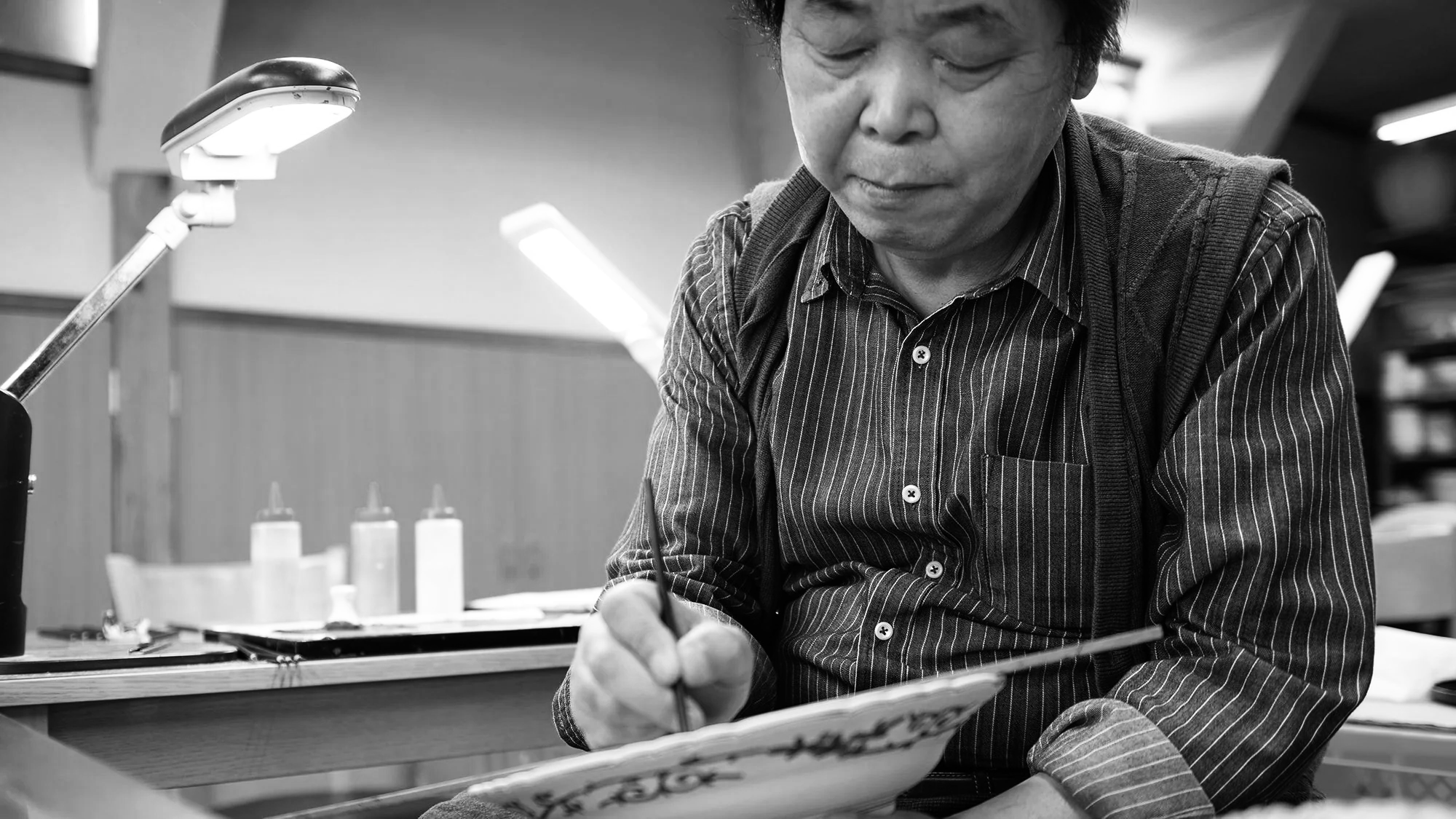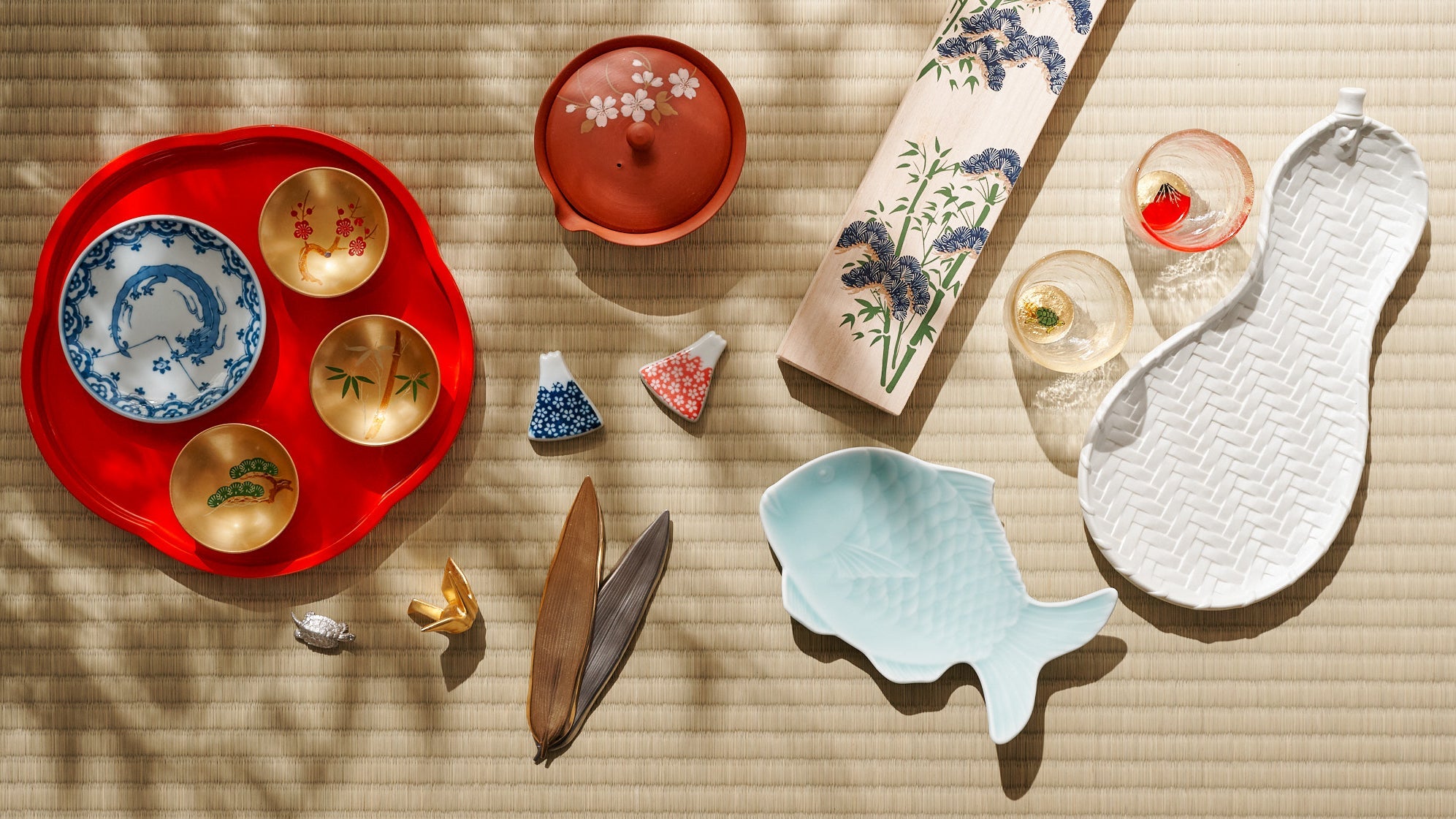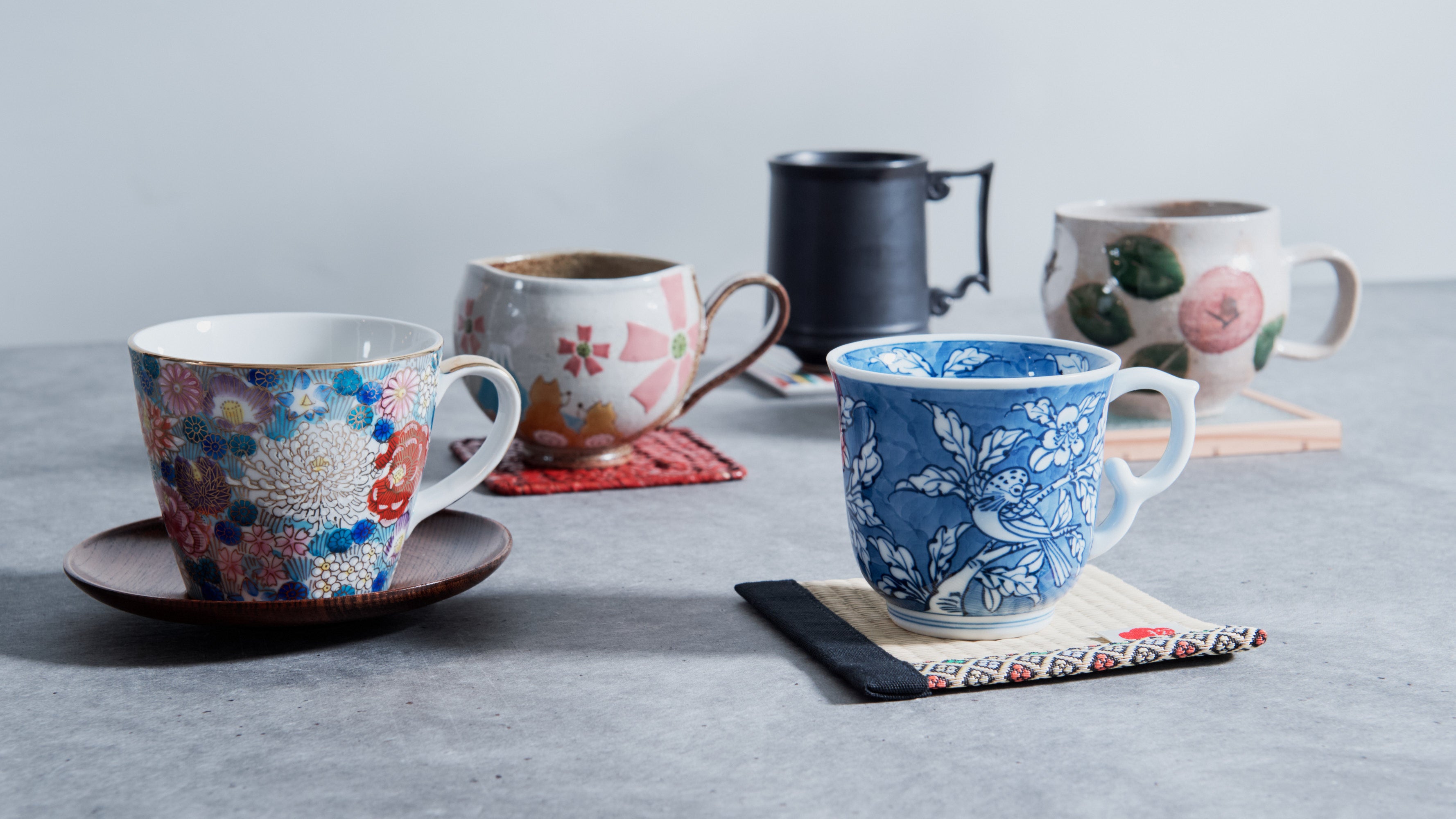
A Classicist of Sometsuke: Yamamoto Choza
Written by Team MUSUBI
In the realm of Japanese ceramics, the decorative technique called sometsuke—derived from the Japanese word someru, meaning “to dye”—is celebrated for its evocative indigo hues. This technique involves painting cobalt oxide underglaze, known as "gosu" in Japan, directly onto a pre-glazed ceramic body. Without an initial glassy coating, the gosu penetrates the bisque, later sealed with a transparent glaze that transforms into a rich, deep blue when fired. The inherent translucence of the porcelain harmonizes with the vivid cobalt, creating a balanced interplay of light and color.

Among the masters of this refined craft, Yamamoto Choza stands unrivaled as an eminent figure in contemporary ai-Kutani ware, known for its striking blue hues. As the painter for Myousen Toubou, his work speaks with a profound depth and expressive richness, even employing only a singular shade of blue. Since 1990, Myousen Toubou has been honored with the esteemed commission to produce tableware for the Emperor and Empress, as well as for use at Imperial banquets. His work seamlessly bridges the timeless legacy of ancient techniques with the refined elegance of contemporary design.
Table of Contents
The Nurturing of Aesthetics of Antiques

Yamamoto Choza’s foray into the world of sometsuke art was profoundly shaped by a family steeped in an appreciation for antiques. Growing up in a home where historical art was cherished, he forged an innate connection with these time-honored forms from a very young age.
"My father ran a carpentry business, which he eventually closed. He loved antiques and collected them. From my childhood, I was involved in handling scrolls, learning about box wrapping, and tying knots. Having been around various items since childhood, my fingers remember them."

Yamamoto apprenticed under several masters during his twenties before resolutely deciding to pursue the art of sometsuke. Observing that Kutani ware was predominantly celebrated for its vibrant, multi-colored decorations, such as hanazume flower paintings and kinsai gold embellishments, Yamamoto saw an opportunity to redefine its narrative. Once considered merely an ancillary adornment, this style allowed his exceptional skill in delicate line work to truly flourish.
"If you think about it, in other regions like Arita ware or Seto ware, sometsuke is very popular as well. Being surrounded by Kutani ware gives the impression that colorful ceramics are all that matter, but that’s not true. So I decided to establish myself in sometsuke of Kutani ware."

Yamamoto further explains that a measured sense of tension is essential to his creative process. This concentration permeates his workshop and is evident in his focused expression as he works, fostering a refined state of mind that enables him to achieve his ideal of blue and white beauty.

"A sense of tension is important, right? The right level. If there's too much all the time, things will break down. It's the same with work, relationships, and products," Yamamoto notes.
His meticulous attention to both the composition of colors and the subtle chemistry of dyes is evident in his frequent use of delicate brushes, often replaced within just a couple of days, to capture the perfect hue and depth.
Preserving Tradition and Symbolism

"I only draw auspicious symbols. That's what everyone wants. Because everyone becomes happy with them. Nobody wants to buy something that will make them unhappy. Porcelain is obviously fragile, so that’s an inherent flaw. If there isn't something to compensate for that flaw, people won't be satisfied and won't buy patterns that seem likely to bring misfortune.”
Committed to uplifting auspicious symbols, Yamamoto infuses his work with motifs that evoke happiness and well-being, attributes highly valued by those who cherish fine porcelain. He believes that the fragility of porcelain calls for compensatory beauty; without it, even the most intricately crafted plate or bowl may fail to bring joy. His designs, rich with traditional symbols such as flowers and treasures, stand as a testament to his dedication to both the art and virtue of sometsuke porcelain.
Despite the challenges involved in crafting thinner, finely detailed plates compared to their mass-produced counterparts, Yamamoto maintains that the beauty and heartfelt dedication embedded in his work far exceed any practical limitations.
Meeting Modern Needs through Choza's Artistry

"To have one's own space filled with them, I think that is the ultimate happiness. I think antiques are like that, at least for those who can afford them. And for those who can’t, they at least seek things that remind them of antiques, that share fragments of their allure."
The form and design of Yamamoto's tableware reflect both his philosophical approach and his meticulous craftsmanship. Immersed from a young age in an environment filled with antiques, he developed a deep sensitivity to what makes a design timeless—something that can endure as heritage art.

He believes that surrounding oneself with such objects offers the highest form of personal fulfillment, whether they are true antiques or pieces that echo their enduring beauty. His tableware embodies this philosophy: a harmonious blend of historical insight and refined technique shaped by years of studying antique forms.
In addition to drawing inspiration from history, Yamamoto continually researches contemporary trends by perusing Japanese lifestyle magazines, and by visiting department stores and exhibitions. He believes that observing the evolving patterns in dining and furniture sections offers invaluable insights into shifting consumer preferences—a dynamic that ultimately informs his artistic vision.
Enhancing the Dining Experience

"The food is the main character. The plate mustn't speak. The plate cares for the queen (the food), but steps back. And let the queen shine."
For Yamamoto, the essence of his art lies in its ability to accentuate rather than overshadow the culinary experience. "The food is the main character," he says, "and the plate must merely support the star performance." His innovative design of the tall kodai, or footing exemplifies this philosophy. The elevated footing not only elegantly frames the food but also ensures that each dish is handled with the utmost care—transforming everyday dining into a refined, sensory experience.
"In classical music, one is provided with a score, yet the interpretation may vary with each conductor. I consider myself more of a conductor," Yamamoto reflects. In his view, every piece he creates is akin to a musical composition, uniquely interpreted through his personal blend of tradition and innovation. His extraordinary ability to weave historical motifs with a philosophical and contemporary sensibility distinguishes him in the realm of sometsuke artistry. Through his work, Yamamoto Choza not only captivates and inspires but also forges an elegant bridge between the past and the present.







Leave a comment
This site is protected by hCaptcha and the hCaptcha Privacy Policy and Terms of Service apply.